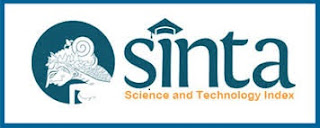An Art-Historical Analysis of Selected Sacred Sufi Paintings in Kano, Nigeria
DOI:
https://doi.org/10.32678/alqalam.v40i2.8171Keywords:
Sacred, Sufi, Brotherhoods, Iconoclasm, Ain MadiAbstract
‘Iconoclasm’, which may simply be defined as the destruction of artworks as a result of hatred towards them is a common phenomenon in all the three major Abrahamic desert religions; Judaism, Christianity and Islam. Because Islam frowns at representational art, especially sculptures in the round, many Muslim artists pursue and develop their creativity in the elegant Arabic calligraphic embellishments used to adorn the walls of mosques, palaces and the covers of Islamic books. However, despite the growing nature of iconoclasm amongst mainstream Muslims, the Sufis see no harm in visually and artistically representing their saints and hermits as a way to honour them and seek their barakah (blessings). It is on this basis that this paper examines selected sacred Sufi paintings of Kano, Nigeria. Relying heavily on oral interviews and written sources this paper traces the historical development of sacred Sufi paintings in Kano, Nigeria, focusing largely on the art historical appreciation and contextualization of such paintings. The paper also found out that despite the importance of sacred Sufi paintings in the reconstruction of history, they receive little or no scholarly attention.
Downloads
References
Adamu, M. U. (1999). Confluences and Influences, the Emergence of Kano as a City-State. Kano: Munawwar Books Foundation, p. 57.
Barkindo, B. (1983). Studies in the History of Kano. Ibadan: Heinemann Educational Books Ltd, pp. 40-50.
Barth, H. (2009). Travels and Discoveries in North and Central Africa (1849-1855). London: Green & Co. Google books, pp. 10-20.
Garba, G. J. (1982). Revolution in Nigeria: Another View. England: Africa Books Ltd, p. 91.
Lewis, G. K. (2010). Sacred Arts Study: Thomas Merton’s Guides for Arts and Worship, pp. 155-157.
Hassan, A. M. (2014). The Role of Shaykh Aliyu Harazimi in the Promotion of the Tijjaniyya Tariqa in Kano c. 1950-2013 (Unpublished M.A Thesis). Bayero University, Kano, Department of History, pp. 7-8.
Iqbal, M. (2001). The Development of Metaphysics in Persia: A Contribution to the History of Muslim Philosophy. London: Luzac and Company, pp. 83-85.
Isa, K. H. (2015). Religion and Society in Kano Metropolis: A Historical Study of Muslim Intra-Faith Relations, 1987-2015 (Unpublished PhD Thesis). Usmanu Danfodio Universitry, Sokoto, Department of History, p. 243.
Jat, J. J. (2007). Image and Form of Indigenous Christian Art in Catholic Churches in Plateau State (Unpublished PhD Thesis). Ahmadu Bello University, Zaria, Department of Fine Art, p. 1.
Jong, F. D. (1989). The Iconography of Bektashism: A Survey of Themes and Symbolism in Clerical Costume, Liturgical Objects and Pictorial Art. Manuscript of the Middle East, pp. 7-29.
Lovejoy, P. E. (1980). Caravans of Kola: The Hausa Kolanut Trade 1700-1900. Kaduna: Ahmadu Bello University Press Ltd, p. 66.
Mubarak, M. S. (2013). A History of Kolanut Trade at Agadasawa in Kano Metropolis 1930-2011 (Unpublished B.A Dissertation). Bayero University, Kano, Department of History, p. 1.
Muhammad, A. (2015). The Aesthetics of Arabic Calligraphic Embellishment of Mosques in Kano, Nigeria (Unpublished PhD Thesis). Ahmadu Bello University, Zaria, Department of Fine Art, p. 6.
Naniya, T. M. (2002). History of the Shari’ah in some States of Northern Nigeria to Circa 2000. Journal of Islamic Studies, 13(1), p. 18.
Nasidi, N. A. (2013). The Contributions of Sheikh Ja’afar Mahmud Adam to Sunnah Da’awah in Kano (Unpublished B.A Thesis). Bayero University, Kano, Department of History, p. 1.
Nasidi, N.A. (2021). A Contextual Analysis of Sufi Saint Paintings in Kano, Nigeria. A Ph.D. Thesis, Department of Fine Art, Ahmadu Bello University, Zaria, 1-20.
Ousmane, K. (1997). “Shaikh al-Islam Al-Hajj Ibrahim Niasse”. In Le temps des marabouts: Itineraires et Strategies Islamiques en Afrique Occidentale Francaise, 1880-1960, Edited by Robinson, David and Jean-Louis, Triaud, Pasis: Karthala.
Papas, A. (2012). Dervishes. Encyclopedia of Islam, 3, pp. 129-135.
Quadri, Y.A. (1985). “Ibrahim Niass (1902-1975) - The Tijjaniyyah Shaykh”, Islam and the Modern Age, XVI (2).
Rudiger, S. (2011). The Divine Flood: Ibrahim Niasse and the Roots of a Twentieth Century Sufi Revival. U.K.: Oxford University Press.
Saeed, K. M. (2011). Islamic Art and Its Spiritual Message. International Journal of Humanities and Social Science, 1(2), p. 227.
Solagberu, M. B. (2009). A Study of the Sufi Works of Shaykh Abubakar Atiq (Unpublished PhD Thesis). University of Ilorin, Department of Religious Studies, p. 5.
Sule, B. (2011). State and Economy in Kano (c.1894-1960): A Case Study Colonial Domination. Kaduna: Ahmadu Bello University Press Ltd, pp. 1-10.
Tahir, I. (1975). Scholars, Sufis, Saints and Capitalists in Kano 1904-1974: The Pattern of Bourgeois Revolution in an Islamic State. Ph.D. Diss., University of Cambridge.
Wright, Z.V. (2020). Realizing Islam: The Tijaniyya in North Africa and the Eighteenth Century Sufi Revival. North Carolina: University of North Carolina Press.
Yahya, D. (2012). Scholarship and Politics in Pre-Colonial Kano. In Seminar Presentation: Faculty of Arts. Kaduna: Kaduna State University, pp. 9-11.
Yunusa, G.N. (2015). The Role of Sheikh Ibrahim Niass in the Development of Tijjaniyyah Order in Zaria circa 1948-2010. M.A Thesis, Ahmadu Bello University, Zaria.
Zarcone, T. (2013). Western Visual Representations of Dervishes from the 14th and Early 20th Centuries. Kyoto Bulletin of Islamic Area Studies, 6, pp. 43-57.
List of Oral Interviews
Abubakar, D. (2019). Interview, Kano, June 18.
Abdullahi, S.H. (2019). Interview, Kumbotso, Kano, December 3.
Faira, T. Interview, Badawa, Kano, January 5.
Haido, M.F. (2020). Interview, Fagge, Kano, January 20.
Matbuli, K. (2020), Interview, BUK, Kano, December 20.
Rashid, D. Interview, Fagge Quarters, Kano, January 8.
Yankaba, B. (2020). Interview, Yankaba, Kano, February 13.
Downloads
Published
Issue
Section
License
Copyright (c) 2023 Nadir A. Nasidi

This work is licensed under a Creative Commons Attribution-NonCommercial 4.0 International License.













